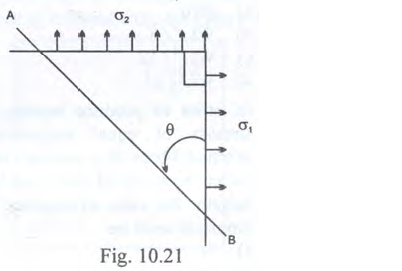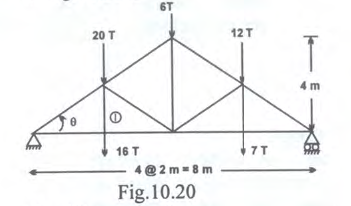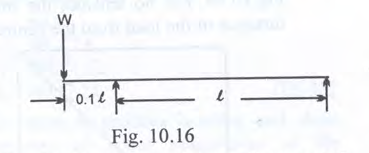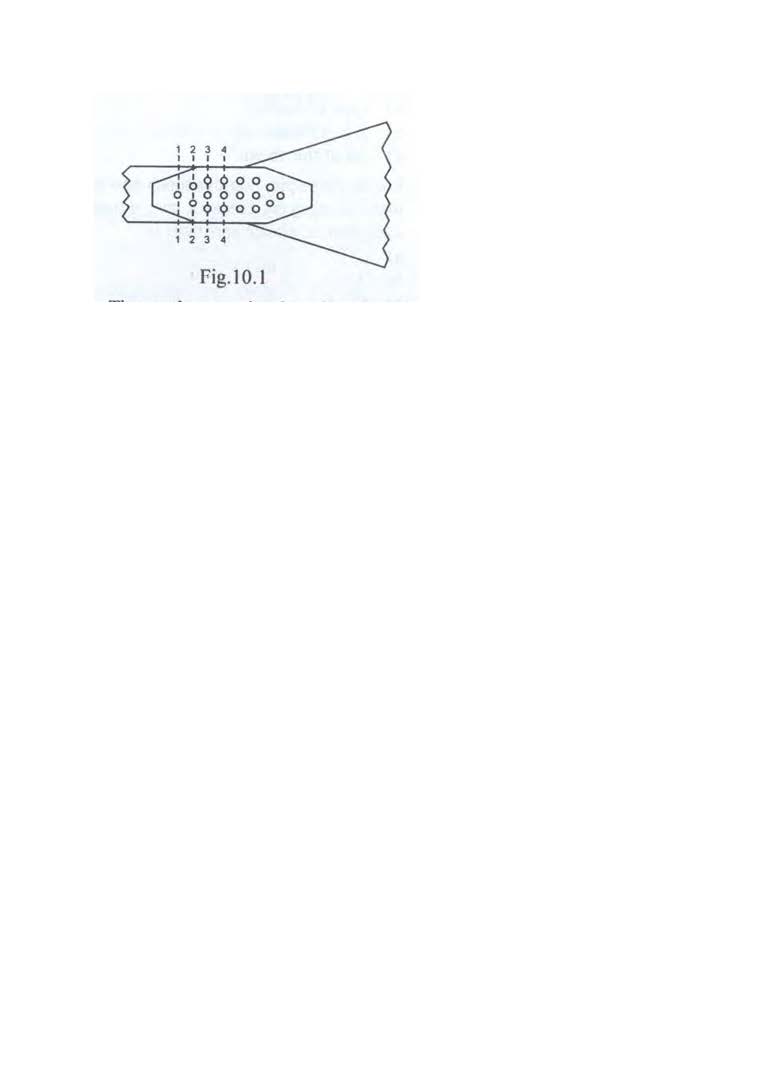Strength of Material Sheet 32
-
1) Question.

In the Fig. 10.21, and are the maximum and minimum principal stresses. In order that the resultant stress
on the plane is
Answer. -
2) Question.
The force in member
 of the truss shown in Fig. 10.20. is
of the truss shown in Fig. 10.20. is  Answer.
Answer. -
3) Question.
A T-section is used as a simply supported beam with uniform loading. The maximum bending stresses for a given load will occur at the
Answer. -
4) Question.

Fig. 10.16 shows a beam of supported length and overhang , carrying a concentrated load at the end
of the overhang. Which one of the following figures would represent the correct shear force diagram for the beam?
Answer. -
5) Question.
A Mohr's circle reduces to a point when the body is subjected to
Answer. -
6) Question.
The bending moment diagram for an overhanging beam is shown in Fig. 10.15.

The point of contraflexure would include
Answer. -
7) Question.
Match List with l with List ll and select the correct answer using the codes given below the lists
List l List ll
(Type of beam with ( S.F. diagram)
&nb
Answer. -
8) Question.
The system which is shown in Fig. 10.10 consists of two prismatic bars of same length and same axial rigidity .
 The system lies in the vertical plane and carries a vertical load at
The system lies in the vertical plane and carries a vertical load at joint , The vertical deflection of joint X is
Answer. -
9) Question.
A reinforced cement concrete footing as shown in Fig. 10.9 carries a concentrated load at P so as to produce maximum
 bending stresses due to eccentricities about x-x axis and y-y axis as 100
bending stresses due to eccentricities about x-x axis and y-y axis as 100kN/m² and 150 kN/m² respectively. If the direct stress due to loading is 175 kN/m² (compressive), then the intensity
of resultant stress at corner B will be
Answer. -
10) Question.
A masonry pier ABCD as shown in Fig. 10.8 supports a vertical load W at a point P. The nature of bending stresses at A due to eccentricity of load about x-x axis and y-y respectively are
 Answer.
Answer. -
11) Question.
The rigid-jointed plane frame shown in Fig. 10.7 will
 Answer.
Answer. -
12) Question.
 The weakest section in a diamond riveting as shown in Fig. 10.1 is Answer.
The weakest section in a diamond riveting as shown in Fig. 10.1 is Answer.

